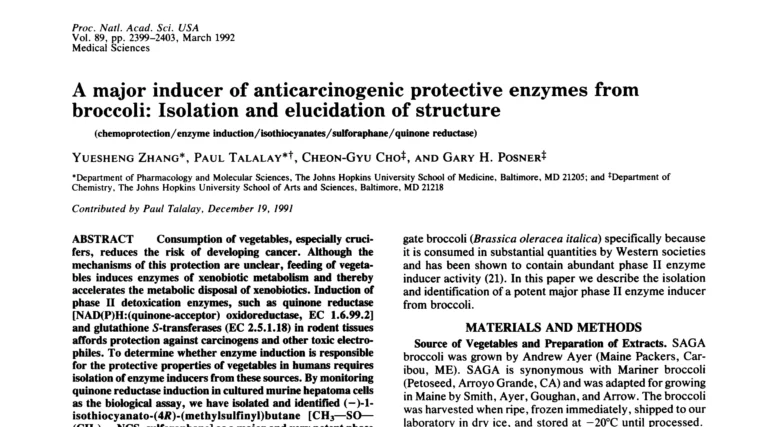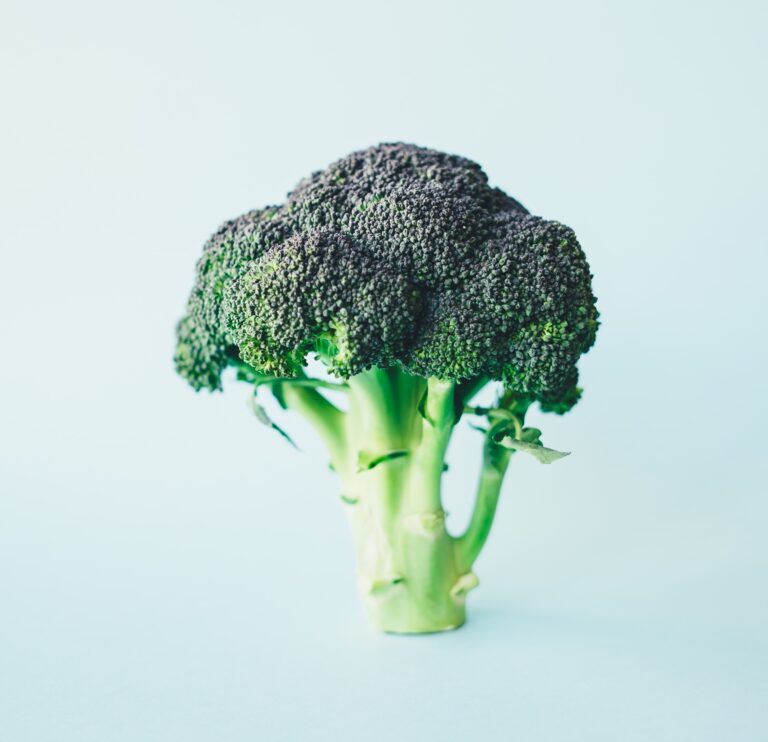Sulforaphane Made Simple
Our super-broccoli is a uniquely powerful source of a natural molecule called sulforaphane. But what is sulforaphane, and what makes it so special?
What is sulforaphane?
Sulforaphane is a natural molecule found in plants. In nature, it helps plants to protect themselves against attacks from insects, fungi and bacteria.
Scientists first discovered sulforaphane more than 30 years ago, and immediately spotted its potential to support human health. In the years since, more than 3,000 research papers have been published exploring the many different ways in which this exciting natural molecule could help us to live longer, healthier lives.

The first paper on the benefits of sulforaphane (Zhang, 1992)
How sulforaphane works
When we eat foods containing sulforaphane, it enters our cells and:
1. Boosts antioxidant production
Activating the gene Nrf2 turns on our body’s natural antioxidant defences. This helps to fight free radicals and reduce oxidative stress.

2. Soothes & prevents inflammation
Inhibiting the protein NF-kB helps to reduce levels of internal inflammation, which is a driver of many chronic health conditions.
3. Supports cell repair, recovery & survival
Activating heat shock proteins encourages our cells to repair any internal damage, which supports cellular health, survival and growth.
Thanks to these three effects, sulforaphane is being actively researched as a promising candidate for both preventing and treating a wide range of health conditions – including high blood sugar, high cholesterol, heart disease, Parkinson’s, Alzhimers, arthritis and even some of the most common forms of cancer.
The challenge with sulforaphane
Sulforaphane is a very unstable molecule.
As soon as sulforaphane is produced it starts to break down. This means it can’t be stored or added to products as an ingredient.
Luckily, nature has found a solution. Plants don’t produce sulforaphane directly – they instead produce another related molecule called glucoraphanin. Glucoraphanin is very stable, and can be easily converted into sulforaphane by a plant enzyme called myrosinase.
When we eat glucoraphanin, it is converted into sulforaphane in our gut – so our focus should be on eating more plenty of bioactive glucoraphanin. But how?

How to find glucoraphanin
Glucoraphanin is naturally found in some plants, but unfortunately only in very small amounts.
The best natural source of glucoraphanin is the humble broccoli – but even broccoli does not contain enough glucoraphanin to give your health a significant boost.
We thought nature could do better, so we gave her a helping hand. Our super-broccoli (known as GRextra to its friends) is a new variety of broccoli that contains 5x more glucoraphanin than standard varieties.
A powerful source of sulforaphane
Our super-broccoli is unlocking the potential health benefits of sulforaphane like never before.
We’ve created a super-broccoli SuperSoup, and each bowl contains so much glucoraphanin that you only need to eat one bowl a week to get your weekly dose of sulforaphane.
It’s a totally new approach. If you’re looking for a healthier future, why not give it a try?



